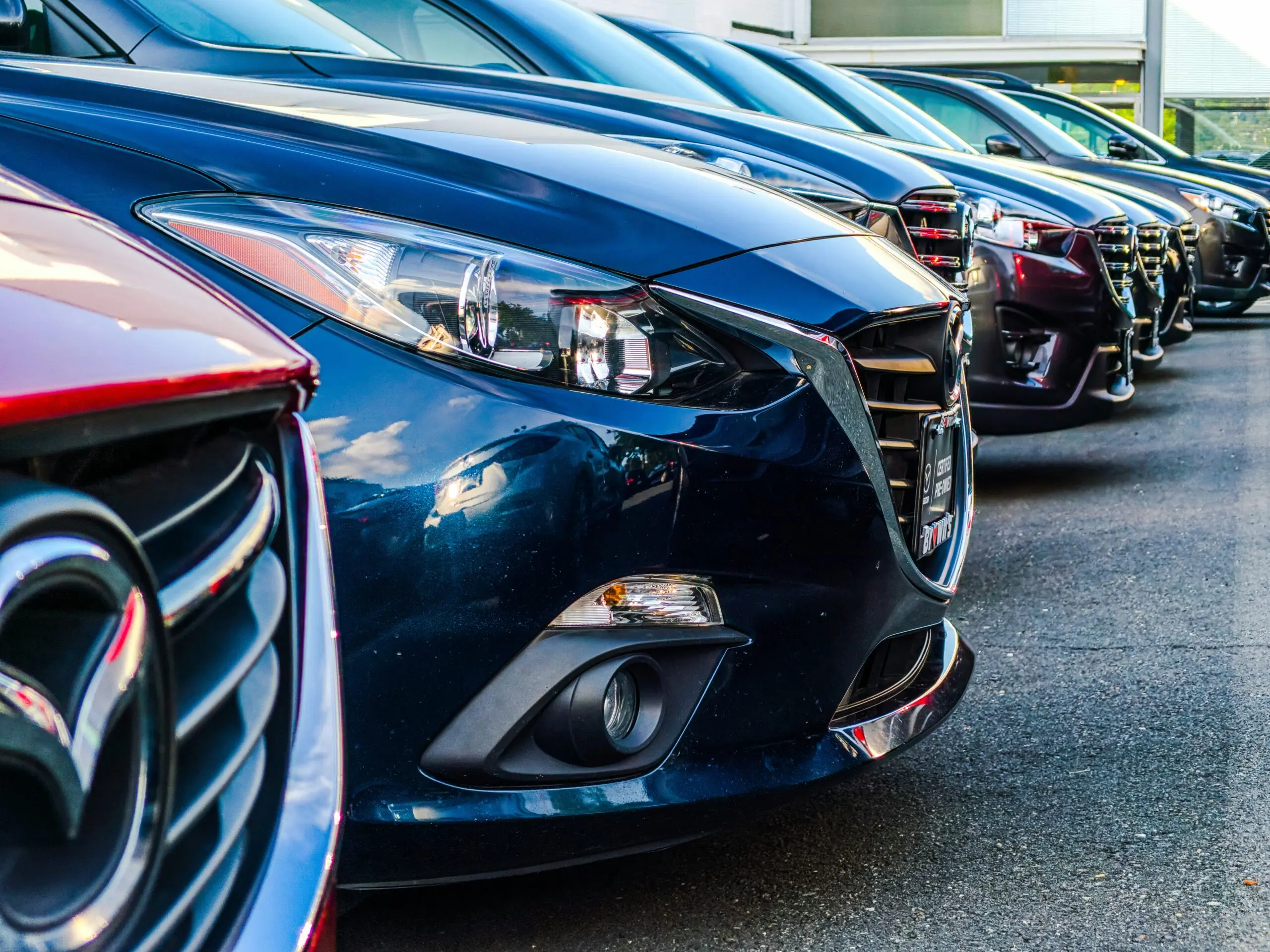Liability car insurance is required in nearly all states and helps pay for property damage and bodily injury for other drivers involved in accidents that you cause. For optimal protection, you can—and should—purchase more than your state’s minimum liability limits.
Liability insurance: The basics
Liability car insurance is a type of auto insurance coverage that protects other drivers on the road if you’re at fault in an accident. Liability coverage is made up of two basic components:
- Bodily injury liability (BI) covers the costs of medical bills for injuries to the other driver and their passengers, up to your policy limits, if you cause an accident
- Property damage liability (PD) pays for the other driver’s property damage, up to your policy limits, if you cause an accident
Drivers are required to purchase minimum liability coverage limits in all states except New Hampshire. But many car insurance policyholders opt to increase their liability limits higher than their state’s minimum requirements for better financial protection in the event of an at-fault accident.
- Typical state minimum liability requirements: 25/50/25, or $25,000 of bodily injury liability per person, $50,000 of bodily injury liability per accident, $25,000 of property damage liability per accident
- Recommended higher liability limits for better protection: 50/100/50, 100/300/100, or 250/500/250
State liability requirements are strict: In nearly every state, you must have car insurance with at least your state’s minimum amount of liability insurance before you register a vehicle or, in some cases, obtain your driver’s license. If you do not adhere to your state’s insurance requirements, you could face fines, license suspension, and even jail time.
Additionally, most states in the U.S.—excluding Delaware, Kentucky, Minnesota, New Mexico, New York, North Carolina, Oklahoma, and Pennsylvania—require that those caught driving without insurance file an SR-22 certificate.
Liability insurance protects other drivers
If you damage another vehicle or another person’s property with your car, the other party involved can file an insurance claim with your insurance company. Depending on the type of claim, your bodily injury liability or property damage liability will then cover any of the other driver’s medical expenses or repair costs up to your car insurance policy limits.

Bodily injury liability
The BIL portion of your liability insurance policy covers you as the at-fault driver, paying the bodily injury costs stemming from an accident you cause. These costs include:
- Ongoing medical expenses
- Funeral costs
- Lost income
- Legal fees arising from a lawsuit

Property damage liability
The other component of liability insurance, PDL, helps cover damage like repairing vehicles and property damaged in an accident that you cause up to your property damage limit. Covered property can include:
- Vehicles
- Buildings
- Signs
- Other roadside objects
KEEP IN MIND:If your insurance doesn’t cover all of the costs, the other party can take you to court to cover any remaining expenses above and beyond the maximum coverage amount.
Liability coverage may include PIP or MedPay
Basic liability insurance does not provide any medical payments for you or your passengers, but some states require some type of medical coverage to be included in all insurance policies. Some states require personal injury protection (PIP) and others require medical payments (MedPay) coverage. These coverages may also be available as optional add-ons in states where they’re not required.
PIP and MedPay are not the same, but they both provide coverage for medical expenses regardless of who is found at fault. PIP is typically required in no-fault states, while medical payments coverage is only required in Maine, and New Hampshire if applicable.
Learn more: The 6 types of auto insurance you need to know
The average minimum liability policy costs $928 a year
The average cost of minimum car insurance—which includes liability coverage and other state-mandated coverages—is $928 a year or $77 a month. But prices vary depending on where you live, your age, and other car insurance rate factors.
Here are the average annual rates for state minimum car insurance coverage in every state, plus the District of Columbia.
| State | Average cost minimum coverage |
|---|---|
| Alabama | $764 |
| Alaska | $1,340 |
| Arizona | $798 |
| Arkansas | $733 |
| California | $787 |
| Colorado | $723 |
| Connecticut | $1,178 |
| Delaware | $996 |
| District of Columbia | $930 |
| Florida | $2,090 |
| Georgia | $1,253 |
| Hawaii | $981 |
| Idaho | $509 |
| Illinois | $756 |
| Indiana | $509 |
| Iowa | $522 |
| Kansas | $662 |
| Kentucky | $1,304 |
| Louisiana | $1,255 |
| Maine | $488 |
| Maryland | $1,090 |
| Massachusetts | $717 |
| Michigan | $1,414 |
| Minnesota | $805 |
| Mississippi | $712 |
| Missouri | $785 |
| Montana | $536 |
| Nebraska | $621 |
| Nevada | $753 |
| New Hampshire | $511 |
| New Jersey | $1,120 |
| New Mexico | $653 |
| New York | $1,459 |
| North Carolina | $511 |
| North Dakota | $875 |
| Ohio | $590 |
| Oklahoma | $721 |
| Oregon | $840 |
| Pennsylvania | $635 |
| Rhode Island | $798 |
| South Carolina | $1,360 |
| South Dakota | $639 |
| Tennessee | $713 |
| Texas | $1,022 |
| Utah | $804 |
| Vermont | $434 |
| Virginia | $733 |
| Washington | $777 |
| West Virginia | $704 |
| Wisconsin | $506 |
| Wyoming | $342 |
| National average | $1,526 |
What affects your liability car insurance rates
While state average costs can give you an idea of your liability car insurance rate, the actual cost of your auto insurance policy will depend on multiple factors, including:
- Address: Your state, city, and ZIP code are used to calculate your car insurance rate based on theft, crime, and accident rates.
- Age: Young drivers under 25 years old and senior drivers over 70 years old may face higher rates due to their risk level.
- Driving record: Speeding tickets, DUIs, and other moving violations can raise your premiums.
- Insurance history: A record of at-fault accidents or a lapse in coverage can lead to a pricier rate.
- Your coverage level: Purchasing higher liability coverage limits than your state’s requirements can result in steeper premiums (but is usually worth it).
Auto insurance companies may also use your credit score, gender, marital status, and other factors to calculate the rate for your auto liability insurance coverage.
Shop around to find the best rates: The best way to find the cheapest car insurance for your driver profile is to compare quotes from different providers. In the Jerry app, you can build a driver profile and browse personalized auto insurance quotes from dozens of companies in one convenient place.
Choosing the right liability insurance limit
Beyond the minimum coverage required by your state, the amount of liability insurance you need varies from driver to driver.
- If you have a high net worth and future earning potential: Consider getting additional liability insurance coverage to protect your assets—at least 100/300/100 if you can afford it. You may also benefit from an umbrella policy.
- If you have a lower net worth and future earning potential: Additional coverage might not be necessary, but increasing your limits to at least 50/100/50 is a good idea if it fits into your budget.
Is 50/100/50 liability insurance enough? According to the Insurance Information Institute, the average auto liability claim in 2022 is $24,211 for bodily injury per person and $5,313 for property damage. On the high side, a few days in the hospital can cost $100,000 per person, a new car replacement is $50,000 on average, and the average settlement in a car accident lawsuit is $23,000. 50/100/50 liability coverage may offer protection, but higher liability limits of 100/300/100 or 250/500/250 will cover the worst cases.
Average cost to increase your liability limits
Jerry’s experts analyzed thousands of car insurance policies purchased by Jerry customers to determine how much increasing liability limits impacts monthly car insurance rates on average. Here’s what they found from some of the nation’s top insurance companies:
| Provider | 15/30/15 | 25/50/25 | 50/100/50 | 100/300/100 |
|---|---|---|---|---|
| AAA | $175 | $199 | $262 | $299 |
| Allstate | $161 | $193 | $222 | $245 |
| Kemper Preferred | $63 | $149 | $181 | $183 |
| MAPFRE | $89 | $100 | $140 | $203 |
| National General | $116 | $160 | $216 | $227 |
| Nationwide | $117 | $167 | $181 | $194 |
| Progressive | $157 | $158 | $192 | $198 |
| Safeco | $140 | $164 | $179 | $197 |
| State Auto | $108 | $169 | $190 | $210 |
| Travelers | $164 | $182 | $208 | $213 |
Consider purchasing more than liability coverage
In addition to liability car insurance, you should consider full coverage car insurance with comprehensive and collision coverage. If they’re not required by your state, other coverage options like PIP or MedPay and gap insurance could also come in handy.
Liability coverage vs. full coverage
Liability insurance offers coverage for the other driver’s damages and medical expenses, but it won’t pay to repair or replace your own vehicle if it’s damaged or stolen. To protect yourself from unexpected claims, it’s a good idea to upgrade to full coverage insurance with collision and comprehensive coverage.
Unlike liability insurance, collision car insurance covers damages from the following:
- A crash you cause
- A collision with an object (including a tree, fence, or mailbox)
- Your car rolling over
- Another driver hitting your car if they don’t have any or enough insurance (if you don’t have uninsured motorist or underinsured motorist property damage coverage)
Additionally, comprehensive car insurance covers damages from perils including:
- Theft
- Vandalism
- Falling objects
- Flood
- Fire
- Hitting an animal
- Natural disasters
- Glass damage (such as a cracked windshield)
You must pay a deductible for collision and comprehensive coverage, which applies before your coverage kicks in.
Coverage for financed vehicles: If you are financing or leasing your vehicle, your lender will typically require you to purchase full coverage car insurance. You may also be required to purchase gap coverage for the duration of your car loan or lease.
FAQ
-
Does liability cover my car if I’m at fault?
-
Should I get liability insurance if I drive but don’t own a car?
-
Does liability insurance cover hit-and-run?
-
Does liability insurance cover vehicle damage from weather or natural disasters?
-
Does liability insurance cover theft?
-
Does liability insurance cover if you’re not at fault?
-
Do I pay a deductible for liability insurance claims?
-
What happens if I don’t have enough liability insurance for a car accident?
-
Is 50/100/50 liability insurance enough?
-
What is the difference between liability coverage and full coverage?

Expert insurance writer and editor Amy Bobinger specializes in car repair, car maintenance, and car insurance. Amy is passionate about creating content that helps consumers navigate challenges related to car ownership and achieve financial success in areas relating to cars. Amy has over 10 years of writing and editing experience. After several years as a freelance writer, Amy spent four years as an editing fellow at WikiHow, where she co-authored over 600 articles on topics including car maintenance and home ownership. Since joining Jerry’s editorial team in 2022, Amy has edited over 2,500 articles on car insurance, state driving laws, and car repair and maintenance.

Sarah Gray is an insurance writer with nearly a decade of experience in publishing and writing. Sarah specializes in writing articles that educate car owners and buyers on the full scope of car ownership—from shopping for and buying a new car to scrapping one that’s breathed its last and everything in between. Sarah has authored over 1,500 articles for Jerry on topics ranging from first-time buyer programs to how to get a salvage title for a totaled car. Prior to joining Jerry, Sarah was a full-time professor of English literature and composition with multiple academic writing publications.






